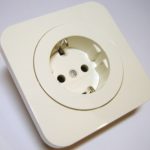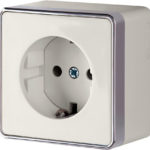There are power outlets in every home, office and public area. The most common type is the wall socket. Its main task is to connect electrical appliances through a plug. The advantage of the device is ease of installation, affordable cost and long operating life.
Design and purpose of the socket outlet
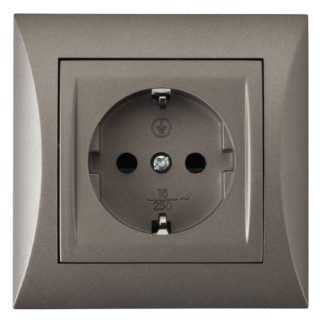
Plug sockets are installed in most rooms, without them it is impossible to turn on electrical appliances. The design of the device includes three main elements:
- contacts;
- block;
- protective case.
The last detail has two important functions - protective and decorative. The body can be either single or double. The main part of the device is a block. The cover and contacts are attached to this element. It is made, as a rule, of carbolite or ceramics.
Sockets made of carbolite are considered more durable. But a block made of this material is found only in old-style devices. Ceramic products have one significant drawback: they are very fragile, so you need to mount the device with great care, since a damaged part cannot be restored.
Another working element of the socket is a contact, which serves as a conductor of electricity. They are made from metal alloys, which are characterized by a certain degree of elasticity.
Classification of sockets
The device is usually classified according to a number of different parameters. About each in more detail.
Design characteristics
Depending on the type of construction, the device is divided into two types:
- Outdoor installation. It is used in the case of laying open electrical wiring. The main part is housed in a plastic housing. The socket of the non-flush type with open wiring is installed using a socket outlet. Often this design is additionally equipped with a protective cover and backlight.
- Concealed or flush-mounted. The flat receptacle is used for concealed wiring. The main parts - the block and the contacts connected to it, are immersed in the wall. The body is a junction box, due to which the protrusion beyond the wall is practically not observed.
Which variety is best to install depends on the preferences of the household.
According to the electrical diagram
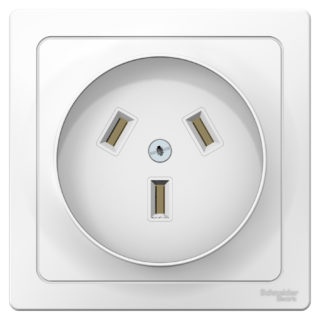
According to this parameter, two types of devices are also divided:
- No grounding. Equipped with two contacts. Designed for two-pole wiring.
- Three-pole. They are installed in the presence of grounding, interconnected by a separate additional contact. Most often, this type is mounted under electric stoves and air conditioners.
If you have difficulties in choosing outlets, you can seek advice from an employee of the management company or a consultant in a hardware store.
According to the level of protection against moisture
By this criterion, devices are:
- Regular or semi-hermetic. Designed for rooms where there is no possibility of moisture ingress. A few small drops do not constitute a malfunction. The plug is clearly marked.
- Waterproof or sealed sockets. Designed for installation in rooms with high humidity levels.The body is sealed thanks to a special membrane. They are mounted externally.
It is recommended to give preference to sealed sockets when installing them in a bathroom or toilet room, on the street of a private house.
By the number of pads
This parameter also divides an electrical device into two types:
- Double ones are equipped with 4 connectors at once, which allows you to simultaneously connect two electrical appliances.
- Single or single pole sockets are used to connect just one electrical appliance.
Having studied all the varieties and their features, you can proceed to the purchase and installation of devices.
Installation features
Installation of concealed plugs
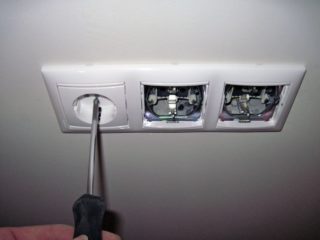
Step-by-step algorithm for connecting a hidden-type device in an apartment:
- Disconnect the electricity supply to the room.
- Decide on the place where the socket will be located.
- With a hammer with a chisel, drill or electric drill, make a hole for the box, insert it there.
- Pass the wires of the electrical cable through the holes located in the lower part of the installation box.
- Using plaster of Paris, gypsum glue or plaster, fix the box to the wall. The adhesive is brought to a soft plasticine consistency.
- Leave for about 10 minutes, until the material is completely dry, remove any residue.
- Remove the insulation from the ends of the cores and connect the phase and neutral wires to them, if there is a ground wire.
- Fasten the wires using a screw or spring method.
The final manipulation is to install a protective plastic case.
Installation of external plugs
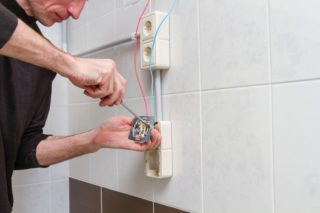
Mounting external plugs takes less time. It is used if the house has open wiring. The installation sequence is as follows:
- Disconnect the electricity supply to the room.
- Sketch the dimensions of the unit on the wall.
- Disassemble the case of the external socket - remove the front cover.
- Bolt the base to the wall.
- Connect wires.
- Mount the plastic cover on top, fasten to the surface with bolts.
The sockets are made of high quality non-combustible materials, which provide insulation of live parts and reliable contact.
The correct choice and installation of plug sockets will significantly extend the operational life of electrical appliances, so this stage must be approached with full responsibility.

